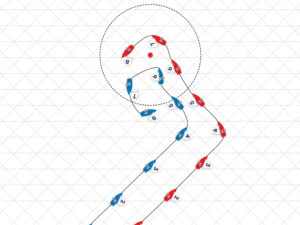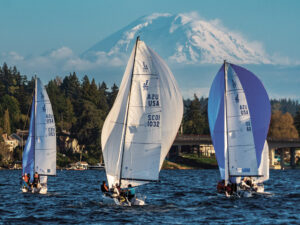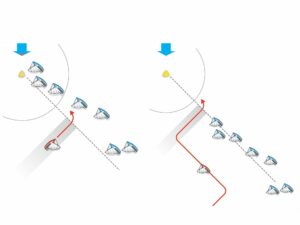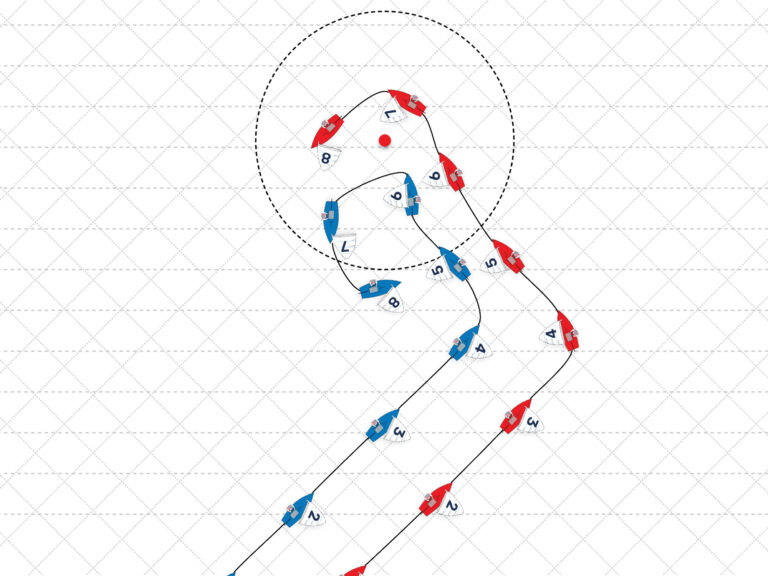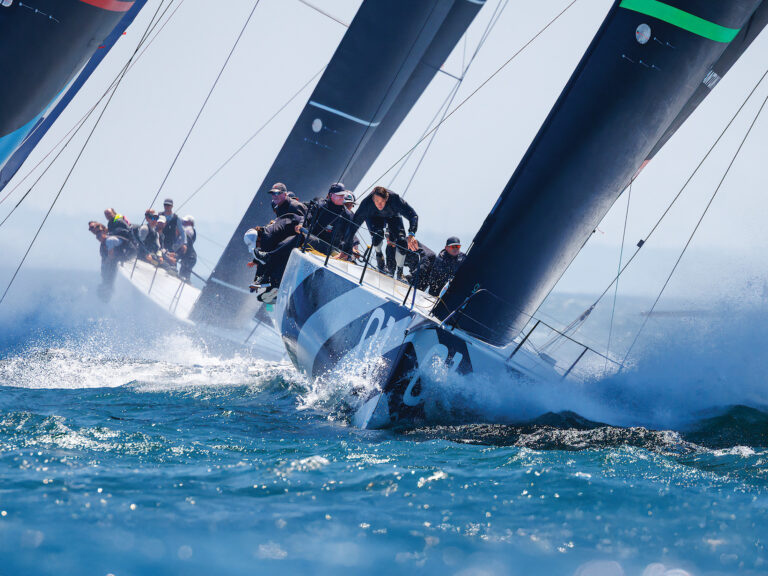
At the Farr 40 East Coast Championship, in Annapolis, Md. in 2013, the Barking Mad team entered the last day of the event with a 1-point lead. It was too small a margin for us to do anything other then go out, sail loose, and get back our gameplan. For the first race of the day, skipper Jim Richardson nailed a mid-line start just to leeward of the group at the windward end, just as we planned. In phase and with a great lane, we felt confident about the plan of going straight and sailing the phase with the shifts. However, the four boats to windward, including our closest competition for the championship, soon tacked and head toward the right side of the racetrack. The quandary quickly became: Do we follow and concede that if the right side wins we will be behind, but in touch with our prime competition, or stick it out and follow our plan?
When making this decision, one of the most valuable pieces of information is instantaneous feedback on which side is working. But how can you get that?
In our case, as we separated from the boats that went right, it became too difficult to compare our progress with my naked eye. In closer situations the eye is fairly reliable. If you can see boats gaining ground—if they’re steadily eating into your view of the far shoreline—there’s a reasonable chance that they are gaining on you. If you are seeing more shoreline, or even holding even, then you are gaining or at least not losing. But, with boats on opposite tacks and separated by a wide gulf, it’s bloody hard to judge if you are gaining or losing.
The best tool for answering this question is a hand-bearing compass. Comparing a bearing to the lead boat to the true wind direction on the mast can give you a good indication of which boat is on a higher rung of the imaginary ladder. If the angle is less than 90 degrees, your opposition is ahead. If it’s greater, you’re ahead–though that does assume a steady wind direction across the course, which may be assuming too much on a shifty track.
If you don’t have a true-wind-direction readout, you can use your headings—on port and starboard tack—and your pre-race wind shots to estimate the true wind direction and then compare that to the bearing to the opposition. You can also take readings over the course of a few minutes and see if there’s a trend. If you’re on starboard tack and on the left side of the course, for example, you want to see the bearing to boats on the right side increasing. That means you’re gradually edging ahead. For boats on the right side of the course, and looking to the left, it’s opposite; a decreasing bearing is good news for the home team.
Back to the Farr 40 race. We were confident in our pre-race homework, and convinced our plan was correct. Our heading on starboard was lifted, and the true wind direction was as far right as it had been all day.
Unfortunately, it was quickly apparent that the readings off the hand-bearing compass had the right side of the track gaining. The next question was: Should we bail?
Being on the lifted tack, combined with a bit of stubbornness, keep us on starboard. The more the split grew, the more difficult it became to consolidate.
In hindsight, we made a mistake. We should’ve tacked toward the right side at the first sign of trouble and gone into what I call a holding pattern. We would have been behind, but we stood a better chance of minimizing the damage by keeping ourselves in touch with the leaders at the first windward mark.
If I have low confidence in what is going to happen, I will happily sail with the fleet away from the favored side of the course and let our boatspeed work for us. The less confidence I have in one side paying off, the more we will start at the favored side of the line, using the gain out of the line bias as our first shift.
In this particular situation, I felt confident about our numbers and the phases, but I was less confident about the current. In the end, the current got us.
There’s nothing wrong with splitting from the fleet. But be cautious when you find yourself sailing away from some of your key competitors.
Trust your numbers, have the hand-bearing compass ready to track the competition on the opposite side of the course, and know the true wind direction and/or the average headings on starboard and port tack prior to the start of the race. This information will make the decision easier when the fleet starts doing something that you don’t expect.
Click here to read more tips from Terry Hutchinson.

